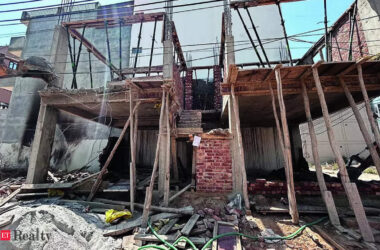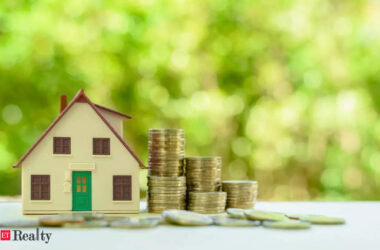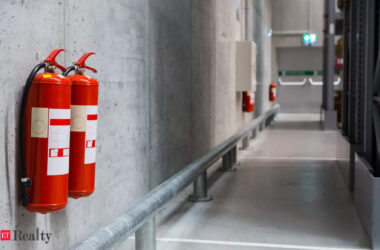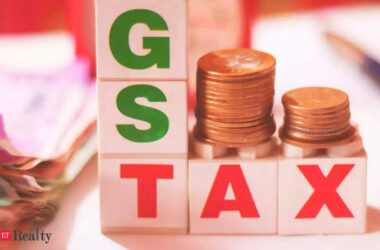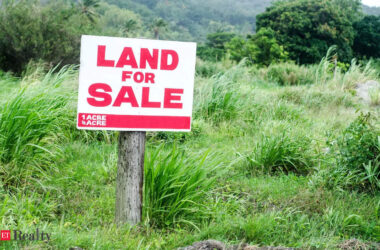NEW DELHI: U.S. Green Building Council (USGBC) LEED version 5, which should be released in about two weeks, aims to address construction phase carbon emissions and will have very stringent definitions of what qualifies as an offset to specific types of activities.USGBC, the Green Building Council of Australia and the British research establishment are also planning to release information about frameworks that can be used for sustainable financing both in the bond markets as well as loan markets. The study will be released in June 2024.In an exclusive conversation with Ankit Sharma of ETRealty, Peter Templeton, CEO, USGBC and P. Gopalakrishnan, managing director, GBCI (South East Asia & Middle East) talked about sustainability, construction industry’s role in reducing carbon emissions, carbon trading and much more.Edited excerpts: What is the USGBC plan in reducing carbon emissions in the construction industry?Peter: USGBC has been around for 30 years at this point in time and the focus of our mission has always been to transform the building industry towards greater sustainability, a key component of that is decarbonisation of the built environment at all scales. And so for us to progress on that front, we really need to be making sure that we’re taking advantage of every opportunity that is present within our industry. And that means looking across the entire existing building stock, as well as every new building that we build. And there’s a tremendous scale of development that’s happening around the world. So we want to make sure in the context of this, we’re coming up with pathways and proven solutions that are accessible and applicable in all markets.But the key is, for us at this juncture in time is that there is a greater scrutiny around the impacts that all of us are having across the economy. And across all regions of the globe, the built environment is an enormous contributor towards carbon emissions. And so we have the potential to address that in every building that we’re working in.Buildings represent roughly 40% of all greenhouse gas emissions. And so if we’re not looking at those opportunities, we’re missing one of the largest tools that we have towards addressing the climate challenge. The important aspects of buildings in that work are not only that they are contributors to climate change, but they’re also the first line of defense in terms of climate resilience. And so we want to make sure when we’re looking at our buildings, we’re doing everything possible to reduce the overall impacts of the emissions, but also taking advantage of the opportunities to ensure that we’re positioned to weather those impacts and a greater time of climate uncertainty.India being in the development phase will have higher carbon consumptions. Is it fair to ask them to reduce their carbon footprint?Peter: Yes, it’s a great point. And we look at this in the context of where development is occurring, and want to make sure that future development is taking advantage of proven solutions that exist at this point in time. It’s not necessarily just about fuels, although it’s important to make sure that we’re recognizing, well, we want to look at the opportunities for savings for energy efficiency, and better building design, to make sure that we’re reducing the need for energy sources to begin with. And that’s going to be a huge part of the challenge is just meeting the energy demands of futures in developing economies and in the world in all regions.And so for us to be able to undertake that work effectively, we need to start with common sense, proven solutions that are going to help us overcome that particular challenge. So once we recognize that we’ve done everything we can to reduce the energy needs through our building design and approaches in all developed markets. And otherwise, we look at what alternative sources exist.Fortunately, we’re in a time where there is incredible innovation around how it is that we build better systems for buildings and how it is that we incorporate clean energy sources. And so I think the the opportunity more so than the challenge is really to leapfrog some of the bad practices that have gotten us into this place largely because of what’s happened in developing countries or developed countries and apply the learnings from that with better cleaner solutions in the context of developing countries that have the opportunity to avoid the challenges that are introduced by the dependence on fossil fuels and other and other building practices.India needs to build lots of houses in the coming years and this kind of construction will only increase carbon emissions. How do we solve that?Peter: So, housing is a challenge in every region of the globe, it’s particularly acute here in India, because of the size of the population, the growth of the population and the need to have housing for all communities. And so this is one of the areas where, as I referred to earlier, we want to make sure that the proven solutions that exist are being applied at scale, that they’re capable of being applied.The affordable housing is not where we want to be, you know, testing out things, we want to be using proven solutions that we know are going to deliver not only for energy and decarbonisation, but also for human health and well being. So within the context of green building, we’re looking at more comprehensive areas of impacts to make sure that the homes that we’re building, the other buildings that we’re creating, are going to be better for the occupants, better for the communities as well as better for the environment and for our climate. And so that’s critically important when we’re looking at the scale of development that is needed to house India’s population and populations around the world, is we’re making sure that the housing that was created is of the highest quality and it’s also going to have the best outcomes for the occupants in the future.Yes, but that is not happening. So what do you suggest should be done?Peter: The specific strategies are ones that we want to make sure are locally applicable. Fortunately, here in India, we do have some large scale residential communities that have been built incorporating green practices, we want to use those as models for future developmentWe want to take the learnings from those organizations that have been involved as designers, planners, builders, in creating those and make sure that that is shared across our industry so that we’re building up the capacity to deliver because the challenge that you’re facing here in India and other communities, is not just a challenge, it is an opportunity to create good green jobs that help create better communities as an outcome. And we want to embrace that as part of the overall economic strategy behind providing affordable housing and building better communities.Countries have created regulatory frameworks that are incentivizing actions around decarbonisation.Peter TempletonYou said you’re not looking at affordable housing as one of the spaces where you want to integrate these sustainable buildings.Peter: No, no, what I was saying is that we want to be using proven solutions. There is a place where we’re continually looking to innovate in our industry and find new approaches with new technologies. And that does tend to come with a cost. And we want to make sure when we’re looking at the critical nature of affordable housing, that we’re embracing the proven technologies, practices and materials that are available that can help us address the better health and lower emissions, as well as lower costs of operations associated with green building.Bengaluru is facing severe water shortage and this happens in cities across India but the governments and industry are not looking at long term solutions. What can be done?Peter: I honestly think it’s a lack of awareness, because we know water scarcity is an enormous challenge. And it’s directly tied to climate change. In these instances we want to make sure that we’re doing everything possible to address it, both in terms of reducing water consumption, and also ensuring that there’s resilience over time. We know that India has done a lot in terms of water reuse and recycling, which has been a critical component of how development has occurred here.We are looking across all forms of resource use and consumption including water and so we’ve done within every project that we certify through our LEED standards, we are looking at water consumption and how best to reduce that and while ensuring that you have water quality that is suitable for the occupants.It’s not going to be solved just by addressing new construction. This has to be addressed comprehensively for the existing building stock as well as all new building stock moving forward. And to look at what the opportunities are to reduce operational water use on all of those.We tend to focus primarily on potable water use, but also know that there are many other uses of water and construction that we want to make sure are being minimized across the board. And then it is scaling the use of green building standards and technology across all projects, existing or new in those communities to help minimize the entire community’s consumption of water as opposed to working out as individual projects and just additionality of projects that are coming online.Why do organizations offering green certification have very limited presence in smaller cities? Gopalakrishnan: You’re absolutely right. But what has happened post covid is that we now see a lot of demand for the tier-II cities. Many companies are now focusing on satellite towns as well. Many of the manufacturing industries as well are now getting developed only in the tier-II cities. But I agree with you that the numbers are not too great. The good news is these companies from tier two cities are interested in going green.Peter: By no means are we…



